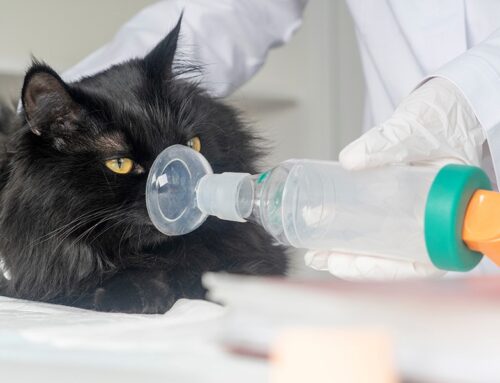At Forestside Veterinary Clinic, we’re often asked whether cats should wear collars, and it’s an important discussion to have. While collars are common for dogs, the choice is less straightforward for our feline friends.
There are pros and cons to consider, and each cat’s individual lifestyle and temperament play a big role in making the right decision.
The Benefits of a Collar for Cats
- Identification: One of the biggest advantages of a collar is identification. Even indoor cats can occasionally slip outside, and a collar with an ID tag can increase the chances of them being returned quickly. While microchipping is essential, collars provide an immediate visual cue that the cat has an owner, prompting neighbours or passersby to take action.
- Visibility: For cats that roam outdoors, a collar with reflective material can make them more visible to drivers at night, reducing the risk of accidents. Some collars also have bells, which can help alert wildlife, like birds, to a cat’s presence.
- Flea Collars: Although flea treatments have advanced, some collars still offer parasite protection. However, spot-on treatments are often more effective and cause less irritation.
The Downsides of Collars
- Safety Concerns: Cats are agile and curious, often squeezing into tight spaces or climbing trees. A collar can become snagged on branches or fences, leading to serious injury or even strangulation. If your cat does wear a collar, we at Forestside Veterinary Clinic recommend using a breakaway collar that releases under pressure to reduce these risks.
- Comfort: Some cats find collars uncomfortable or irritating. Constant scratching at the collar can lead to skin irritation or hair loss. Additionally, not all cats adjust to wearing one, and for some, it can cause unnecessary stress.
- Bells and Wildlife: While bells may protect wildlife, they can be frustrating for your cat. Some studies suggest that bells are not as effective at deterring hunting as we might hope, as many cats are skilled at silent stalking.
Alternatives to Collars
- Microchipping: Microchips provide permanent identification and should be a priority for all pet owners. At Forestside Veterinary Clinic, we offer microchipping services that link your cat to your contact information, allowing any shelter or vet clinic to reunite you with your cat if they are lost.
- GPS Trackers: Some owners opt for GPS-enabled collars to track their cat’s movements. If you’re considering this, make sure the collar is a breakaway type to avoid safety risks.
Which Cats Benefit Most from Collars?
Cats that spend a significant amount of time outdoors may benefit from a collar with an ID tag and reflective material. These collars provide peace of mind to owners and neighbours that a cat is cared for, while also offering some safety in low-visibility conditions. However, for indoor-only cats, a collar may not be as necessary—microchipping offers sufficient security if they happen to escape.
Conclusion
The decision of whether your cat should wear a collar depends on your individual circumstances. At Forestside Veterinary Clinic, we recommend using a lightweight, breakaway collar if you choose to go that route. Regularly check for signs of irritation, and always prioritise your cat’s safety. Don’t forget that microchipping remains the gold standard for ensuring your cat’s identification and safety.
If you’re unsure, feel free to consult our vets at Forestside Veterinary Clinic for personalised advice tailored to your cat’s unique needs.



